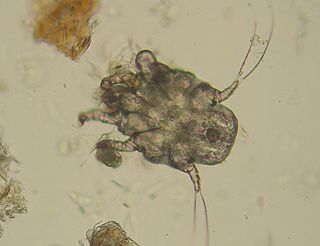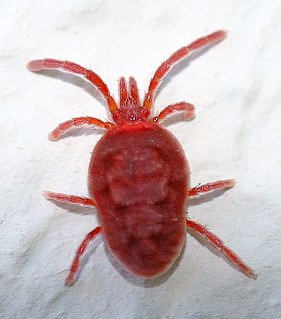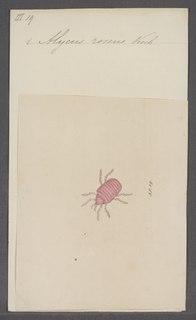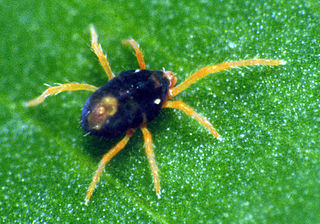
Earwigs make up the insect order Dermaptera. With about 2,000 species in 12 families, they are one of the smaller insect orders. Earwigs have characteristic cerci, a pair of forceps-like pincers on their abdomen, and membranous wings folded underneath short, rarely used forewings, hence the scientific order name, "skin wings". Some groups are tiny parasites on mammals and lack the typical pincers. Earwigs are found on all continents except Antarctica.

The Blephariceromorpha are an infraorder of nematoceran flies, including three families associated with fast-flowing, high-mountain streams, where the larvae can be found.

Astigmatina is a cohort of mites in the subclass Acari, mites and ticks. Astigmata has been ranked as an order or suborder in the past, but was lowered to the cohort Astigmatina of the supercohort Desmonomatides in the suborder Oribatida, of the order Sarcoptiformes. Astigmatina is now made up of the two groups Acaridia and Psoroptidia, which have been suborders of the order Astigmata in the past. Astigmatina contains about 10 superfamilies and 76 families under Acaridia and Psoroptidia.

Endeostigmata is a suborder of endeostigs in the order Sarcoptiformes, which is in the class Arachnida. There are about ten families in Endeostigmata.

The Sarcoptiformes are an order of Acari comprising over 15,000 described species in around 230 families. Previously it was divided into two suborders, Oribatida and Astigmatina, but Oribatida has been promoted to an order, and Astigmatina is now an unranked taxon.

The Trombidiformes are a large, diverse order of mites.

Parasitengona is a group of mites, variously ranked as a suborder or a cohort, between the taxonomic ranks of order and family. Members of Parasitengona include velvet mites, chiggers, and water mites.
Limnochares americana is a species of mite in the family Limnocharidae.

Alycidae is a family of mites, or endeostigs, in the suborder Endeostigmata. There are at least 6 genera in Alycidae.
Limnocharidae is a family of mites in the order Trombidiformes. There are at least 4 genera and about 12 described species in Limnocharidae.

Hydryphantidae is a family of mites in the order Trombidiformes. There are more than 30 genera and 130 described species in Hydryphantidae.
Limnochares is a genus of mites in the family Limnocharidae. There are at least two described species in Limnochares.

Linopodes is a genus of mites in the family Cocceupodidae. There are at least two described species in Linopodes.

Cocceupodidae is a family of mites in the order Trombidiformes. There are at least 3 genera and about 23 described species in Cocceupodidae.

Eupodoidea is a superfamily of mites in the order Trombidiformes. There are about 8 families and more than 160 described species in Eupodoidea.

Neotrombidium is a genus of velvet mites and chiggers in the family Neotrombidiidae. There are at least three described species in Neotrombidium.

Trombidioidea is a superfamily of mites in the order Trombidiformes. There are about 8 families and at least 430 described species in Trombidioidea.

Tetranychoidea is a superfamily of mites in the order Trombidiformes. There are about 5 families and more than 2,200 described species in Tetranychoidea.

Penthaleus major, known generally as the winter grain mite or blue oat mite, is a species of earth mite in the family Penthaleidae.

Enarthronota is a suborder of mites in the order Oribatida. There are about 14 families and more than 450 described species in Enarthronota.














